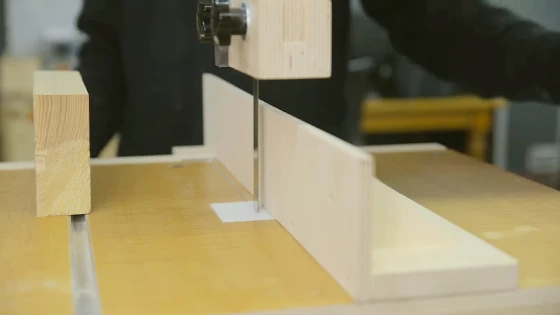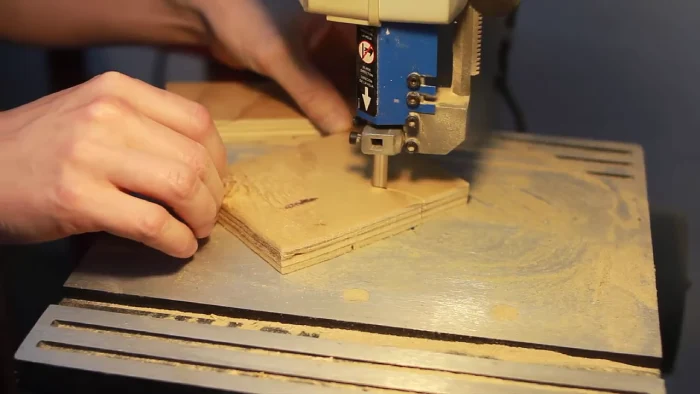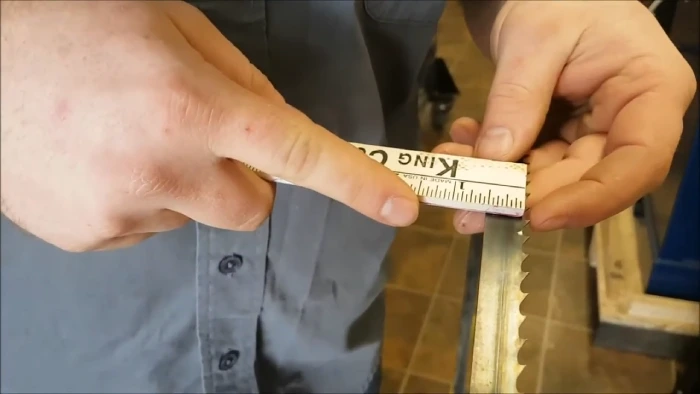How to Keep Bandsaw Fence Parallel to Blade: 4 Easy Steps
Maintaining an accurate parallel alignment between your bandsaw fence and blade helps ensure that your woodworking projects turn out precisely and accurately. A misaligned fence can lead to inaccuracies and inconsistencies in your cuts, resulting in poor-quality work and wasted materials.
As a woodworking enthusiast, I researched and discovered the best practices for keeping your bandsaw fence parallel with the blade. According to my findings, adjusting the bandsaw fence parallel to the blade involves carefully loosening the fence bolts to make precise measurements.
After that, the process requires aligning the fence parallel to the blade and then carefully tightening the bolts.
I will explain how to align your fence parallel to the blade so you can get accurate and reliable cuts with your bandsaw.
How to Keep Bandsaw Fence Parallel to Blade: 4 Steps to Follow

To keep your bandsaw fence parallel to the blade, follow these four steps:
- Step 1: Loosen the fence bolts
- Step 2: Measure blade-to-fence distance and precisely align the fence
- Step 3: Recheck the alignment and tighten the bolts
- Step 4: Verify the alignment accuracy with test cuts
Now I will further explain each of these steps in detail to help you achieve perfect parallel alignment between your bandsaw fence and blade.
Step 1: Loosen the Fence Bolts
Before proceeding with the alignment process, you have to ensure that your bandsaw is unplugged and powered off. After that, locate the bolts on the front and rear portions of the fence, typically found on the tabletop.
Use the correct size wrench or Allen key to match the bolt heads on your bandsaw model. Turn the bolts counterclockwise to release the tension gradually. Remember to loosen them enough for adjustments but avoid fully removing them at this stage. This applies to both kreg and carter bandsaw fences.
Step 2: Measure Blade-To-Fence Distance and Precisely Align the Fence
After loosening the fence bolts, you have to measure the distance between the bandsaw blade and the fence. Use a ruler or caliper to obtain accurate measurements.
Position the measuring tool along the blade’s length, near the front and rear. Align the ruler parallel to the blade and firmly press it against both the blade and the fence. Take note of the distance between the blade and the fence.
If using a caliper, gently close the jaws around the blade and extend them to touch the fence, noting the measurement on the caliper’s scale.
Once you have the measurements, align the fence parallel to the blade by gently pushing or pulling it. Make precise adjustments to ensure a consistent blade-to-fence distance along the entire blade length.
Step 3: Recheck the Alignment and Tighten the Bolts
After aligning the fence, recheck the alignment using your measuring tool to confirm that the blade-to-fence distance is consistent along the entire length of the blade. Once satisfied with the alignment, it’s time to tighten the bolts securely.
Be cautious not to over-tighten, as this may lead to misalignment or damage to your fence or saw. Properly tightening the bolts ensures that your fence stays securely in place while in use.
Step 4: Verify the Alignment Accuracy With Test Cuts
To ensure the accuracy of your alignment, perform test cuts on scrap material after securing the fence and tightening the bolts. Make a series of test cuts and carefully evaluate the results.
If the cuts aren’t parallel or accurate, adjustments to the fence may be necessary. Repeat the process of securing the fence, tightening the bolts, and making test cuts until you achieve the desired alignment. Take your time and evaluate the test cuts meticulously to ensure the fence is parallel to the blade.
How can you determine if the alignment of the bandsaw fence is no longer parallel?

You can check whether the alignment of your bandsaw fence has changed by observing the quality of your cuts and any consistent drifts from the intended line.
If your cuts are consistently veering off course or having trouble maintaining straight and accurate cuts, it indicates that the bandsaw fence may be misaligned.
Another method is to inspect the distance between the bandsaw blade and the fence at various points along the blade’s length. If you notice variations in this distance, it suggests that the fence isn’t parallel to the blade.
It’s advisable to use a high-quality bandsaw fence for improved accuracy. Regularly checking the results of your cuts and ensuring a consistent blade-to-fence distance will help you promptly identify and address any misalignment issues.
Can temperature and humidity changes affect the bandsaw fence alignment?
Temperature and humidity changes can impact the alignment of the bandsaw fence. The bandsaw’s materials, such as metal and wood, can expand or contract in different environmental conditions. For example, high humidity can cause the wood components to absorb moisture and expand, potentially shifting the fence.
Conversely, dry and low-humidity conditions can lead to contraction. It’s crucial to be aware of these factors as they can result in subtle shifts in the fence’s alignment over time.
Regularly checking and adjusting the fence, especially after significant temperature or humidity changes, will help maintain precise and accurate cuts. Stay mindful of these environmental influences to ensure optimal alignment for your bandsaw fence.
Accurately Align Your Bandsaw Fence for Flawless Woodworking Results

Maintaining the parallel alignment of the bandsaw fence is crucial for accurate and precise cuts. Following the four simple steps that I have shared with you ensures that your woodworking projects turn out precisely and consistently.
Measure meticulously, align with care, and regularly check for changes to uphold optimal performance. The attention to detail in aligning your bandsaw fence pays off in the quality of your craftsmanship.
Always be mindful of potential bandsaw injuries and adhere to safety guidelines. Prioritize using safety equipment, such as goggles and hearing protection, and follow proper operating procedures to minimize the risk of accidents.







